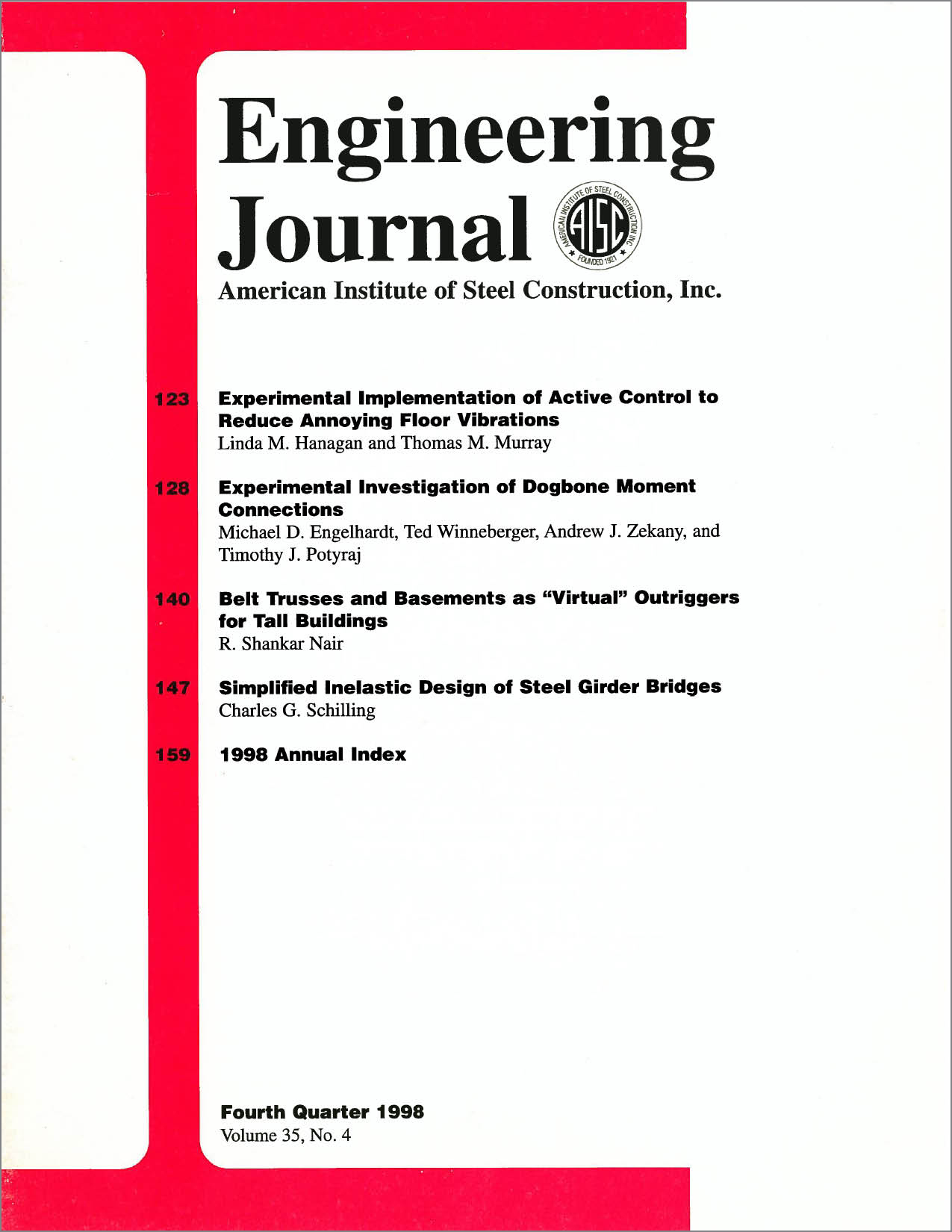Belt Trusses and Basements as Virtual; Outriggers for Tall Buildings
DOI:
https://doi.org/10.62913/engj.v35i4.710Abstract
The outrigger concept is in widespread use today in the design of tall buildings. In this concept, “outrigger” trusses (or, occasionally, girders) extend from a lateral load-resisting core to columns at the exterior of the building. The core may consist of either shear walls or braced frames. Outrigger systems can lead to very efficient use of structural materials by mobilizing the axial strength and stiffness of exterior columns to resist part of the overturning moment produced by lateral loading. There are, however, some important space-planning limitations and certain structural complications associated with the use of outriggers in tall buildings. A variation on the outrigger theme is the “offset” outrigger concept proposed by Brian Stafford Smith. Offset outriggers can overcome or circumvent many of the problems associated with conventional outriggers. A further, more specialized, development of the offset outrigger concept is the use of belt trusses and basements as “virtual” outriggers for tall buildings, as proposed in the present paper. A belt wall is used in this way in a tall building now under construction in Malaysia.

